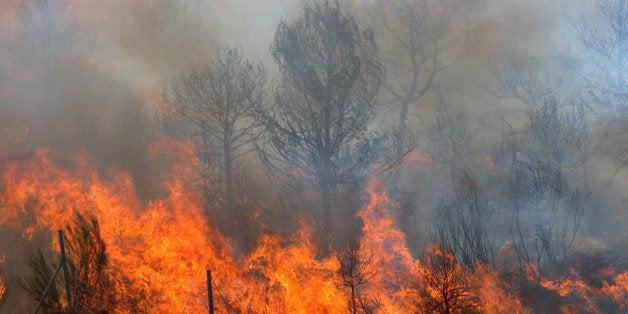
While wildfires are currently devastating larges swaths of northern California, Oregon, Washington, Idaho and western Montana, an interesting experiment is underway at Lake Tahoe and central Nevada. Imagine Steve Jobs meets wildfire. The Nevada Seismological Laboratory at the University of Nevada, Reno has been rapidly deploying pan-tilt-zoom HD and static 4K fire cameras on its seismic network in the greater Tahoe area and central Nevada, and folding in crowd sourcing to change fire fighting from a reactive to a proactive exercise.
Early discovery and/or actionable intelligence are both key in quickly knocking down wildfires as demonstrated this summer. As the fire season grows longer ever year, and the impact of firestorms becomes ever greater, private, IP-based microwave communication technology holds an expedient and proven approach to bending this ill-fated trend downward. This high-tech Wilderness Internet creates a whole new means by which to monitor for wildfire.
The AlertTAHOE and BLM Wildland Camera platforms (alerttahoe.seismo.unr.edu) have grown from one camera to a dozen (and growing) in only one year. BLM, U.S. Forest Service, CalFire and many local fire departments use these cameras for routine reconnaissance; fire officials have real-time access to camera pan-tilt-zoom functions. The public also has access to the real-time imagery and on demand time-lapse capability, effectively implementing 21st century crowd-sourcing, fire-tower observers. Implementation of machine vision and smoke recognition through artificial intelligence is also underway. Together, this provides an all-in-strategy for early detection and monitoring of wildfire.
Early insight into system performance was demonstrated last summer when the lone Snow Valley Peak HD camera at Lake Tahoe spotted a lightning-strike fire. The response was quick, yielding a fire that was less than a half acre. This exercise has now been repeated many times over this summer providing early, actionable intelligence on several dozen fires, with a handful of early fire discoveries, including in the Tahoe basin where this system proved invaluable on June 27, 2015 after a dry lightning storm rumbled through the area. Several fires were spotted within minutes of the lightning strikes, providing an easy path to minimize wildfire growth in this pristine region. Early actionable intelligence was invaluable for directing an appropriate response to the fire-at-hand (see YouTube: nvseismolab). This has been especially true in central Nevada, where several fires in remote regions of the state have been put-down quickly by BLM personnel due to early intel, saving an hour or more in response time. The most recent fire, Cold Creek, was first spotted on Aug. 14, 2015 from a camera atop Fairview Peak in western Nevada that provided invaluable time as extreme red flag conditions rocked the area. This ALERT (Access to Leverage Emergency information in Real Time) system also provides unprecedented real time views of fire evolution to incident command centers and the curious (and sometimes concerned) public, supporting safer operations for fire crews and potential evacuations for the public in populated regions.
When Nevada Governor Brian Sandoval, California Governor Jerry Brown and U.S. Senators Dean Heller (Nev.) and Dianne Feinstein (Calif.) convene with representatives of agencies and research on the shores of Lake Tahoe for the annual Tahoe Summit on Aug. 24, attention turns to protecting the deep, blue waters of this pristine lake. Unlike the 2014 summit, the forecast this year is for sunny but very smoky skies. So much so, the fires from hundreds of miles away in the Pacific Northwest are now rendering the fire camera system much less effective as it attempts to stand sentinel over the region. This unfortunate fact brings into sharp focus the need for a western states strategy to bring to bear the arsenal of 21st century tools into the wildfire battle.
In the wildfire battle space, the presence of high quality, on demand time-lapse imagery is a game changer. Without proper actionable intelligence, fire breakout is sometimes inevitable, culminating in large firestorms as seen throughout the western states today.
Because the microwave backbone that supports the ALERT networks is multihazard capable, ranging from earthquake monitoring/early warning to fire detection/monitoring and extreme weather, costs are shared among a number of agencies and interest groups. Given this summer's successes at Lake Tahoe and central Nevada, it appears that the early detection and intel from the fire portion of this all hazards network likely amortizes its costs in only a year or two. UC San Diego is presently integrating its southern California fire camera network into the ALERT system under AlertSOCAL, and together with the University of Nevada, Reno, is launching AlertWILDFIRE, which is hopefully the first step towards a larger integrated "all hazards" network throughout the western United States to fundamentally change how we detect and fight wildfire. This project is definitely in the spirit of Think Different.
